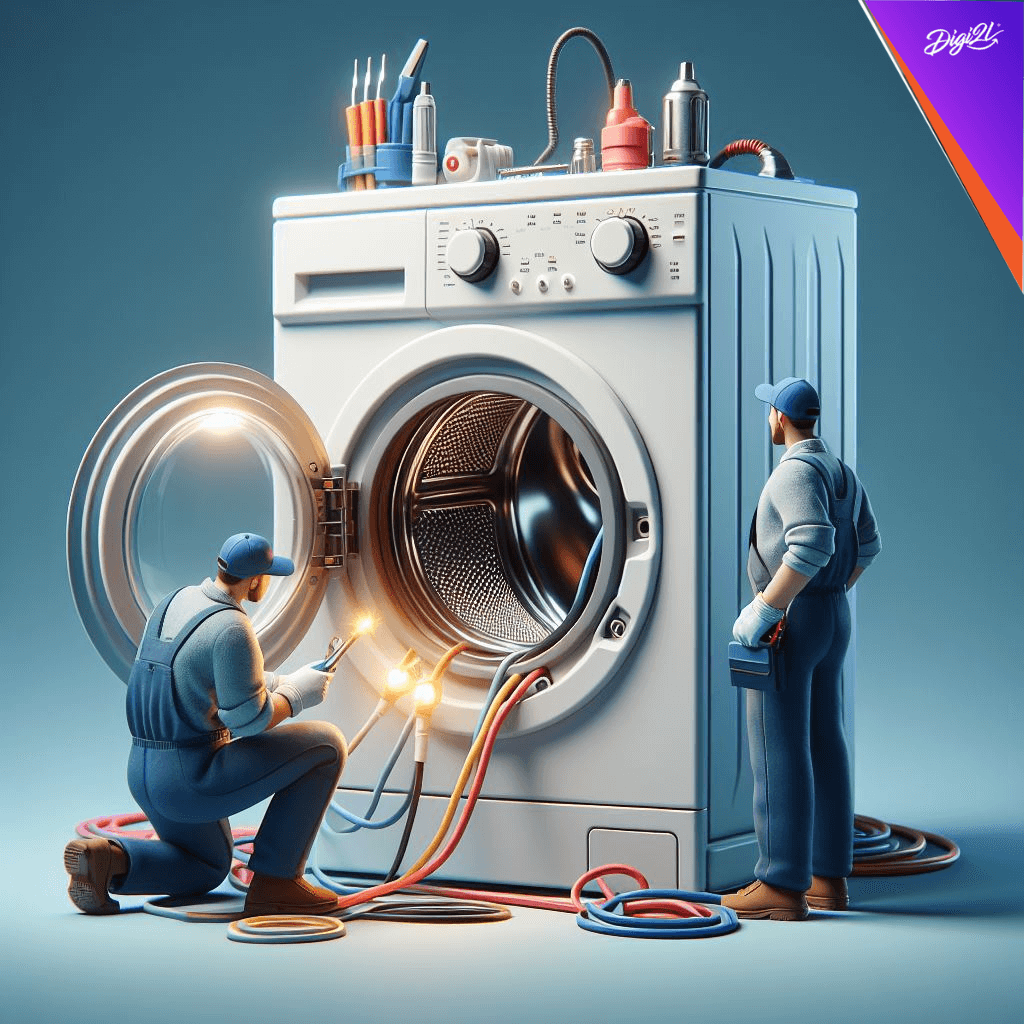
Please Wait ...


Blogs> The Anatomy of a Malfunction: Understanding What Makes a Washing Machine Go Awry

In the modern household, the washing machine stands as an indispensable ally, promising to alleviate the burdens of laundry day with its intricate blend of mechanical, electrical, and hydraulic components. However, like any complex machinery, washing machines are prone to malfunctions that range from minor inconveniences to major catastrophes. Leakage emerges as a common issue, often stemming from worn hoses, damaged seals, or loose connections. What might start as a small drip can quickly escalate into a flooded floor, causing extensive damage to surrounding surfaces and necessitating costly repairs. Similarly, the failure to drain properly is a prevalent malfunction, typically caused by obstructions in the drainage system such as clogged filters, blocked hoses, or malfunctioning pumps. Mechanical failures, like broken belts, worn bearings, or faulty motors, can render the machine inoperable, often accompanied by ominous noises, erratic movements, or complete power failures. Environmental factors also play a role, with hard water causing limescale buildup and voltage fluctuations straining electrical components. User error compounds the risk of malfunction, as overloading the drum, selecting inappropriate cycles, or neglecting routine maintenance can accelerate wear and tear. However, proactive measures can mitigate these risks. Regular maintenance, including cleaning filters, inspecting hoses, and descaling components, can preemptively address potential issues. Adhering to recommended loading capacities and cycle settings alleviates strain on the machine, prolonging its lifespan. Investing in quality appliances and reputable brands can also reduce the likelihood of malfunctions, as superior craftsmanship and durable materials offer greater resilience. Furthermore, staying vigilant for early warning signs, such as unusual noises, leaks, or erratic behavior, enables timely interventions to avert catastrophic failures.
Understanding the causes of washing machine malfunctions empowers homeowners and repair technicians alike to navigate the challenges of appliance ownership with confidence. By unraveling the mysteries of these everyday marvels, individuals can take proactive steps to ensure the longevity and reliability of their washing machines, turning potential breakdowns into opportunities for enlightenment and resolution.
In the realm of modern convenience, few inventions rival the humble washing machine. This appliance, nestled in utility rooms and cramped spaces alike, stands as a testament to technological progress, promising to alleviate the burden of laundry day. However, like any complex machinery, washing machines are not immune to malfunction. From the mundane drip to the catastrophic flood, understanding what makes a washing machine malfunction is crucial for both homeowners and repair technicians alike. In this exploration, we delve into the intricate workings of these everyday marvels to uncover the culprits behind their occasional failures. At its core, a washing machine operates on a delicate balance of mechanical, electrical, and hydraulic components. The process begins with the filling of the drum, where water enters through a combination of valves, hoses, and pumps. Once filled, the drum agitates, mixing detergent and water with the soiled garments, before spinning them at high speeds to expel excess moisture. Throughout this cycle, sensors, switches, and control boards orchestrate the symphony of movements, ensuring seamless operation.
Despite the meticulous design, washing machines are susceptible to a myriad of malfunctions, ranging from minor inconveniences to major catastrophes. One of the most frequent issues is leakage, often caused by worn hoses, damaged seals, or loose connections. The incessant drip, seemingly innocuous at first, can quickly escalate into a flooded floor, wreaking havoc on surrounding surfaces and necessitating costly repairs.
Another prevalent malfunction is the failure to drain properly. This affliction, characterized by waterlogged garments and stagnant pools, typically stems from obstructions in the drainage system. Clogged filters, blocked hoses, or malfunctioning pumps can impede the flow of water, disrupting the delicate equilibrium of the washing process. Furthermore, mechanical failures, such as broken belts, worn bearings, or faulty motors, can render the machine incapacitated, leaving users stranded with heaps of unwashed laundry. These internal ailments often manifest as ominous noises, erratic movements, or complete power failures, signaling a need for immediate intervention. Beyond mechanical wear and tear, environmental factors can exacerbate the propensity for malfunction. Hard water, laden with minerals like calcium and magnesium, can precipitate limescale buildup within the machine, impeding its functionality over time. Similarly, fluctuations in voltage or frequency can strain electrical components, leading to premature failure and erratic behavior.
Moreover, user error plays a significant role in the lifespan of a washing machine. Overloading the drum, selecting inappropriate cycles, or neglecting routine maintenance can accelerate wear and tear, hastening the onset of malfunctions. The relentless pursuit of convenience often blinds users to the importance of proper care, resulting in avoidable breakdowns and costly repairs. While the specter of malfunction looms ominously, proactive measures can mitigate the risk and prolong the lifespan of a washing machine. Regular maintenance, including cleaning filters, inspecting hoses, and descaling components, can preemptively address potential issues before they escalate. Additionally, adhering to recommended loading capacities and cycle settings can alleviate strain on the machine, preserving its functionality for years to come.
Investing in quality appliances and reputable brands can also mitigate the likelihood of malfunctions, as superior craftsmanship and durable materials offer greater resilience against wear and tear. Furthermore, staying vigilant for early warning signs, such as unusual noises, leaks, or erratic behavior, can prompt timely interventions, averting catastrophic failures and costly repairs.
In the grand tapestry of modern living, the washing machine stands as a stalwart companion, steadfastly tackling the mountainous burdens of laundry day. Yet, beneath its unassuming facade lies a labyrinth of intricate mechanisms, vulnerable to the caprices of fate and human error. Understanding what makes a washing machine malfunction is not merely an academic pursuit but a practical necessity for homeowners and repair technicians alike. By unraveling the mysteries of these everyday marvels, we empower ourselves to navigate the treacherous waters of appliance ownership with confidence and foresight. So, the next time the drum falls silent or the floor grows damp, remember: within every malfunction lies an opportunity for enlightenment and resolution.

By Digi2L - June 8, 2024

By Digi2L - June 7, 2024

By Digi2L - June 6, 2024